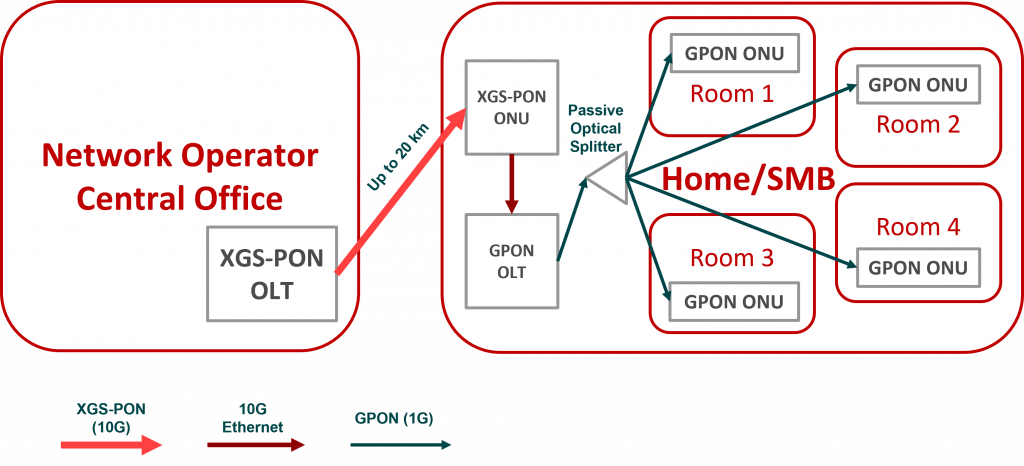During the height of COVID, it quickly became apparent how critical our internet connection is. Students learned remotely, employees began to telecommute, online shopping became more prevalent, and telehealth gained popularity. The common denominator among these trends is the need for high speed, low latency internet, which, when it comes to homes and small businesses, isn’t always so simple to provide.
While much of the world has returned to a semblance of its routine, many of our behavioral changes have stuck. As a society, we have come to expect a certain standard of service from our network operators. In fact, according to a study from Analysys Mason, broadband customers are more concerned about reliability and performance than price.
In light of these trends, many look to Fiber-to-the-Home (FTTH) as a viable answer. Fiber can promise much faster overall internet speeds. However, Wi-Fi can often be a bottleneck within the home or business. Its signal often struggles to reach distant rooms around corners, on different floors, or through walls, and it can also suffer from interference with neighboring Wi-Fi networks and microwaves. Additionally, a complex Wi-Fi network in a large home or small business can prove difficult to manage.
Fiber-to-the-Room (FTTR) addresses this issue by bringing fiber not just to the edge of the building, but into each room. FTTR allows for higher speed internet (upwards of 1Gbps) that is more reliable than Ethernet or coaxial cable.
For end users, installing FTTR allows them to actually receive the level of internet performance that they have come to expect. With FTTR, multiple people within the same building can run live video conferencing streams simultaneously, without experiencing lags to the service.
For operators, FTTR creates a valuable opportunity to offer better service to their customers, which in turn allows them to charge more per user. They can provide customers with faster, more reliable internet than is possible without fiber. Operators can also use FTTR to promote premium value-added services, such as augmented reality, virtual reality, metaverse, and other bandwidth-hungry applications. Furthermore, the added value of FTTR may convince some customers that installing fiber in their home is worthwhile, thereby converting customers that otherwise would have opted out of fiber completely.
The Importance of Optical Line Terminals
When we talk about “fiber,” we are typically referring to the Passive Optical Network (PON) in particular. In contrast to active networks, PON is lower cost to maintain, since passive optical elements don’t need any power and require little maintenance.
The two main components of PON architecture are the Optical Line Terminal (OLT) and Optical Network Unit (ONU – also called ONT for Optical Network Terminal). At the risk of oversimplification, the OLT manages traffic to many ONUs (point-to-multipoint), while each ONU converts the data between fiber and Ethernet.
In most networks, the OLT is situated in the provider’s central office and manages up to 128 ONUs. Each ONU would typically be at a distinct house or building, providing Fiber-to-the-Home with that unit.
Ethernity’s OLT Solution for FTTR
The solution that Ethernity proposes for FTTR is a little different, however. Since we want to extend fiber to multiple rooms within the home or office, a mini-OLT is required for the building, beyond the usual ONU. Each room, in turn, has its own ONU, converting fiber to Wi-Fi or Ethernet for use in that room alone. In essence, we are creating two PON networks: A typical network with an OLT hub outside that services many ONUs (buildings); and a mini-PON network within the house, where a mini-OLT services several ONUs (rooms).

Most OLT devices are designed to serve the maximum of 128 ONUs. This is clearly overkill for the “mini-OLT” used in FTTR applications. In a private home or small business, several ONUs is much more common than 128.
Thus, Ethernity’s OLT device provides an ideal FTTR solution for an OEM that can pair its own 10G PON ONU with our GigaBit OLT in a single appliance. The OEM’s ONU receives the data via 10Gbps XGS-PON fiber from the provider’s central office and converts it to standard Gigabit Ethernet. Ethernity’s gigabit OLT MAC then translates this back into GPON and propagates it to each room in the house or office using point-to-multipoint communication. Together, this becomes a cost-effective, high-performance solution that can address the growing demand for FTTR.

